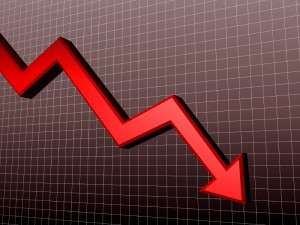Online Poker Traffic Down 16% Since Start of 2013
 A post titled “Hardly anyone playing on Full Tilt” on TwoPlusTwo.com piqued my curiosity this morning. I wondered how online poker, as a whole, is faring as we enter the 44th annual World Series of Poker and as the U.S. prepares to re-enter the online poker market.
A post titled “Hardly anyone playing on Full Tilt” on TwoPlusTwo.com piqued my curiosity this morning. I wondered how online poker, as a whole, is faring as we enter the 44th annual World Series of Poker and as the U.S. prepares to re-enter the online poker market.
The answer? Not so great.
Data provided by PokerScout.com reveals that the 7-day rolling average of “players online” at the 11 poker sites that currently exceed a 1,000-player 7-day rolling average – sites which combine to represent almost 80% of the market – declined by roughly 16% over the last six months. The decline was fueled primarily by steep losses at PokerStars and Full Tilt Poker, though only two of the 11 sites showed any increase.
Full Tilt’s problems are not new. After a short-lived surge when it re-opened in November 2012, the site steadily lost players. By March 2013 it slipped to 4th in the traffic rankings, behind PartyPoker and iPoker. Since then Full Tilt has clawed its way back to 2nd place, though its gain in players has been offset by losses by previous 2nd and 3rd place sites PartyPoker and iPoker.
PokerStars’ player losses are more surprising. PokerStars’ share of the market, when its ring-fenced Italian, Spanish and French sites are included, has remained constant at roughly 50%. But traffic at the site is down approximately 19% since December 2012.
A six-month trend is really just a snapshot of the industry, but a 16% decline in that short of a timeframe indicates bigger issues overall for online poker. It also reveals why so many sites have recently made efforts to improve the experience (and customer lifetime) of recreational players. The sites have attempted innovations such as skill-matched tables, anonymous tables, and anti-ratholing measures – all features that are designed to slow the movement of bankrolls from weak players to strong players.
Those efforts may help slow the decline in online poker traffic, but whether they will reverse the trend is less clear. The boom of 10 years ago was fueled at least in part by expansion efforts into non-traditional poker markets outside of the U.S. and parts of Western Europe, like Brazil and Russia. All of the lowest-hanging fruit has been plucked from that tree. Remaining worldwide expansion efforts will be more difficult due to negative cultural attitudes about gambling, poor Internet connectivity, and/or levels of disposable income that aren’t sufficient to allow people to risk money playing online poker.
The market also isn’t well-served by the agonizingly slow and piecemeal, state-by-state return of online poker to the United States. A federal solution to that problem seems as unlikely as ever.
In the short term, the overall market numbers are not likely to improve over the course of the next two months. A large part of the poker world will attend the WSOP in Nevada during that time, where the only available online poker option at present is the fledgling Ultimate Poker site. WSOP.com is expected to launch its own real-money poker site during the Series.
U.S. sites would be well-advised to watch the trends of the ROW sites as they bring their own offerings to market over the course of the next year. Much of the U.S. industry seems to have pot-of-gold dreams about online poker and online gaming. The PokerScout numbers should be a cold splash of reality.


















6 month trend is very criteria, as traffic in winter months is much stronger than in spring/summer months.
I meant 6-month trend is “very wrong” criteria.
A 16% drop in 6 months is utterly meaningless, since you’re going from a higher season to a lower season. For the correct picture, you want to compare year-on-year like Pokerscout does in their weekly analysis. In the latest (May 27), it shows a 7% decline over the same period a year prior.
I would have compared YOY if I could have — that is generally what I prefer to do for the exact reason cited in the last post, and I hinted at that in the body of the post itself when I mentioned that six months is just a snapshot — but the data wasn’t available to me.
While I appreciate moving from a “high” season to a “low” season, the data showed that of the 11 sites, only 5 declined from December 1 to May 31. Two actually increased their traffic and four showed no change. Perhaps the business is not as seasonal as it one was. With the U.S. no longer in play, the Southern Hemisphere countries (South America and Oceania primarily), which are on inverted seasons to the U.S. and Europe, should make up a larger overall percentage of the market now and should do a better job balancing out any seasonal affects.
The sites that showed no change or increased their traffic since December 1 tended to be smaller sites, where statistical aberrations will have a stronger effect on the results. With the smaller sites, obviously promotions run during that time will have a stronger effect on the numbers than at the larger sites. So reading these numbers is a bit of science and a lot of art.
Overall, however, I stand by my assessment that traffic is down more than just seasonally (and it seems that this conclusion is backed up by data to which I don’t have access, as provided in afjwie’s comment).